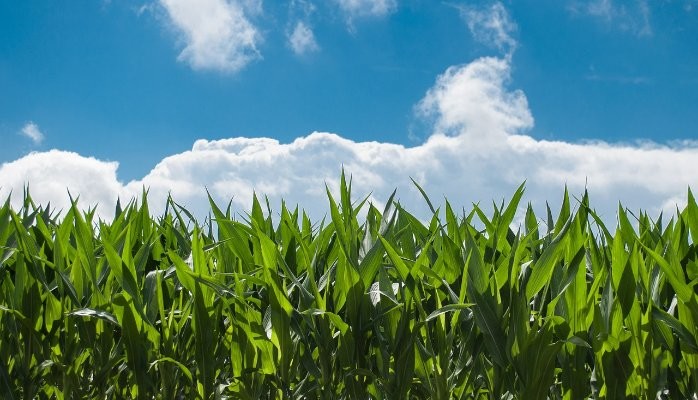
Pretty Green Space
Before I’m accused of spinning the issue of fertilizers/chemical use in farming, let me put it into terms that most homeowners can relate to: You know that lush green lawn you enjoy? My daughter and I love to go barefooting (her term) in the yard by our house and barn, so O kill weeds, keep nasty bugs away, and fertilize the yard with urea.
I am careful to apply products by label recommendations to keep little bare feet off the lawn after it’s been sprayed, but not as careful as farmers are in their use of products in their fields. Farmers utilize technology for greater accuracy, undergo certification to apply products properly and follow product labels stating for acceptable rates. Quite different than my weed killing spraying technique!
Homeowners go to great lengths to have outdoor spaces without pests. The National Academy of Science points to lawn use as a significant part of what they say is the “pesticide problem.” According to the Environmental Protection Agency (EPA), homeowners use 10 times more pesticides per acre than farmers do, although the farmer uses pesticides more widely. Interestingly—the same website page shows that a riding lawnmower pollutes as much in one hour as does driving a typical automobile for 45 miles.
Is it really applying common sense to believe that farmers are spraying chemicals as much as they can? If direct exposure to the chemicals used in your home and on your lawn hasn’t damaged you, it stands to reason that products used in food production won’t either. I’m not going to claim that every practice or product in farming is perfect, but I can promise that these practices are done and products are used with a foundation of common sense and a whole lot of research.
Michael Pollan, author of The Omnivore’s Dilemma and Food Rules and other books has some great ideas—and an avid following, especially after the movie Food, Inc. I agree with many of his points about eating healthier and appreciate his interest in food as a journalist, but take issue with his representation of modern agriculture.
I find Pollan’s work to be divisive in the conversation around the food plate. Some of his ideas lack common sense, largely because of a lack of ongoing firsthand experience and because of a seemingly larger budget than most food buyers can afford. Frankly, many of his ideas are insulting to many in agriculture.
Case in point: farmers are not so ignorant that they can’t control their own destiny, nor are they controlled by big business—as Pollan claims. Agriculture is not an industrial revolution but rather a technological adopter. It is not a perfect system; it’s one we continue to improve upon just as agriculture has been improved upon since the start of time.
One of the challenges agriculture faces is that farming and food processing aren’t pretty businesses. Rain can create piles of mud and manure on the most pristine operation. Animals can be very dangerous, as can massive pieces of equipment. Idyllic barns no longer best serve animals or farmers, and facilities that are closed to protect animal health seem secretive to the public.
Today’s technology makes farms more akin to something out of The Jetsons than Charlotte’s Web. Some of our practices look terrible to the untrained eye, even when they’re done in the best interest of the land or animal. Hopefully, common sense prevails to answer the question of why such practices might be used so that it becomes more of a question about “why?” rather than an attack or assuming the worse about agriculture. Consider the example of Princess earlier in this chapter the next time you see another nasty video from animal rights activists.
Practices are constantly reviewed in research and federal agencies so they can be improved in the future, moreso today that at any time in the past. The intense interest in food (and, therefore, farming) offers the opportunity for a more dynamic discussion about what we do throughout the food system, yet that excitement wanes when rotten vegetables are launched across the food plate.
There are many different ways to grow food. Hopefully, you’ve seen that come to life through both firsthand stories from farmers and a human look at agriculture. If you approach the conversation with labels or perceptions of ignorance, greed, or negativity, you will not find hands reaching across the table, because these labels are very personal to farmers and ranchers.
Common sense is perhaps the most important component of the approach presented in No More Food Fights! We all could use more of it, I suspect. How are you applying common sense in making your food decisions?
Interested in the connections between farm and food? Learn more through No More Food Fights! or by visiting www.causematters.com.